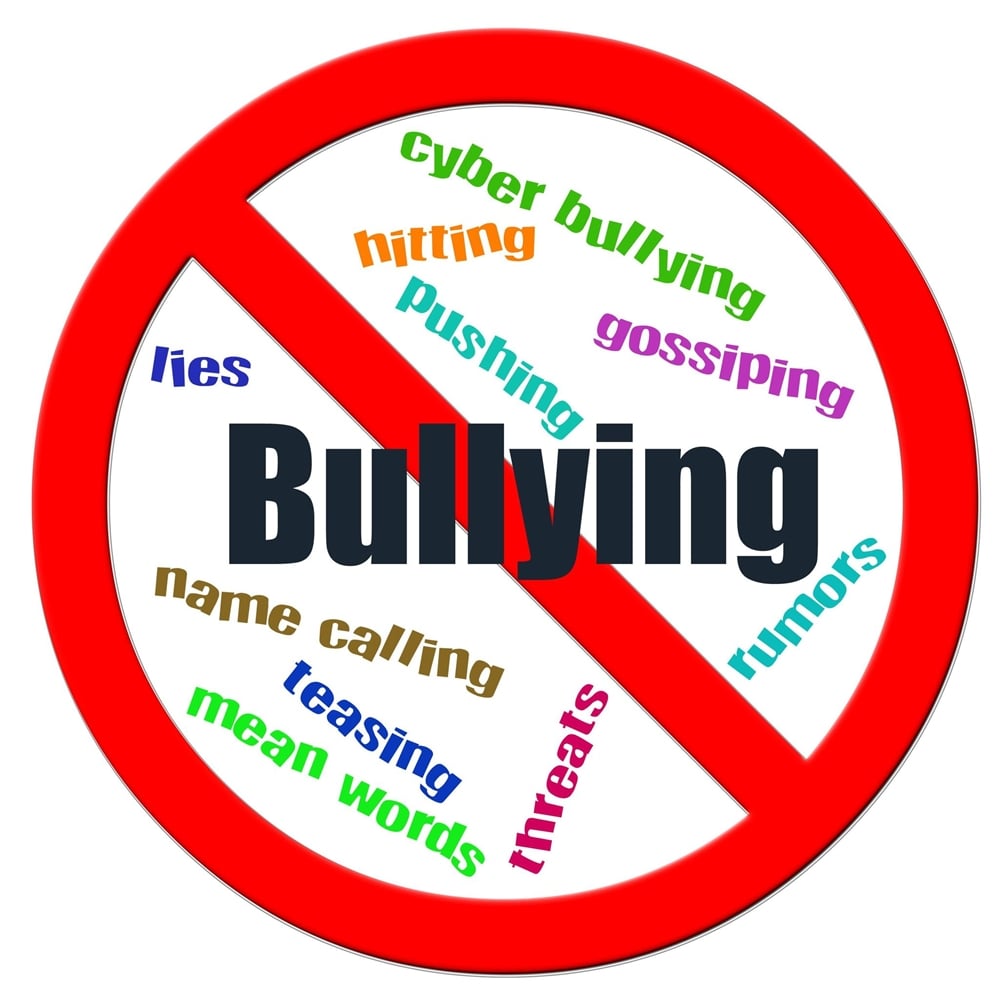Patricia Bolender teaches music at Boyd E. Smith Elementary School in Clermont, Ohio.
Ms. Bolender enrolled in course 712: Sticks and Stones: The NO Bully Zone and created an outline for a bullying prevention program. Read on to find out how you can create your own bullying prevention program and help prevent bullying in your classroom or school!
Outline for Developing and Implementing a Bullying Prevention Program
I.Pre-Assessment of School wide Behavior Expectations
- Staff meets to assess the needs for bullying prevention.
- Break out into grade-level or mixed groups for pre-assessment activity.
- Write out a group definition of bullying.
- Write about a time when you were growing up that you were bullied. Let members know this is private, and not meant to be shared.
- Make a list of students at your school who you think are being bullied. Compare members’ lists.
- Share with another group.
- Share definitions and list of names of students who are being bullied with whole group of staff members.
- Identify existing practices that work or don’t work
II.Form Committee
- Form committee (including the principal, teachers, counselors)
- Committee administers a student survey to form a needs assessmentand focus the intervention.
- Identify schoolwide behavior expectations
- Organize consequences
- Encourage positive staff-student connections
III.Train Entire Staff
- Staff must understand the school’s role in preventing bullying
- Staff must use the discipline process
- A few people should be trained in using the reflection form.
- Bullying committee helps staff implement positive acknowledgement with students and with each other.
- Greeters
- mentors
- extracurricular activities
- notes home
- friendship teams
IV.Create a Discipline Program that fits our school mission and culture.
- Schedule an In-service Day for staff to meet and create a Discipline Program.
- Establish clearly defined school wide behavior expectations rather than rules that describe only general principles.
- Team leaders role-play and give examples of clearly defined rules (i.e. “No teasing” versus “Respect others.”)
- Create predictable and escalating consequences.
- Discuss the danger of creating unique consequences for eachstudent and each situation.
- Plan a rubric-based consequences chart
V. Help Bullied and Bullies
1. Resources
- Provide resources for those most affected
- Counseling
- Form facilitating groups where peers can address issues
- Acknowledge positive actions
- Staff is trained to point out students’ positive behavior using descriptivelanguage.
- Develop social climate
- Work to develop a peer climate in which bystanders discourage bullying.
- Work to develop a peer climate in which peers befriend targets
- Adults model behaviors
- Implement effective discipline systems
- Recognizing positive behaviors
- Listen and spend time with students
VI.Integrate Social – Emotional Education into the Curriculum
- Improve the school climate and culture
VII.Monitor the Program
- Ensure follow-through of bullying prevention program.
- Provide feedback to staff, students, and families on successes.
Activity: Resource Sharing with Google Docs
The web offers a multitude of bully related resources to help you and your school with anti-bullying efforts.
I used http://www.pacerkidsagainstbullying.org/kab/what-is-bullying/ and http://www.stopbullying.gov/get-help-now/index.html for my two websites. The first is more geared toward younger children, while the second site is more geared toward older students and also offers help with cyberbullying.
Learners Edge Recommended Resource: Cerebral Palsy Guidance for additional information relating to National Bullying Prevention Month and Civil Rights Relating to Bullying
Do you have a bullying prevention program at YOUR school? If not, maybe it’s time for you to enroll in Sticks and Stones: The No-Bully Zone, Course #712 TODAY!







